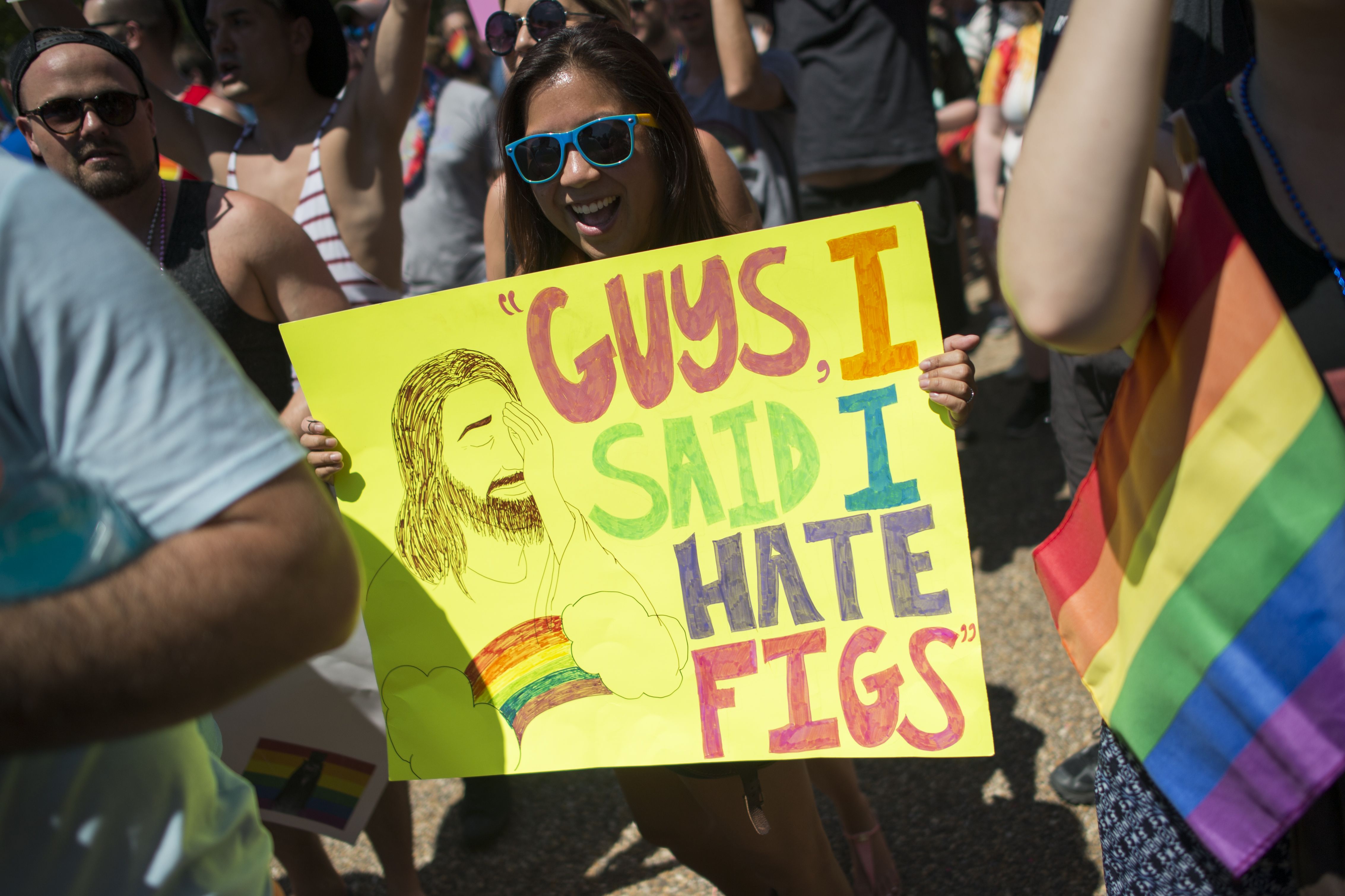Over a hot and soggy weekend in Washington, D.C., people gathered to parade, boogie to the Pointer Sisters, and straight-up resist. And all for the same reason: It was Capital Pride, the annual celebration of the LGBTQ movement in the nation’s capital. There were, it seemed, people of all orientations and origins teeming across the city. Some dressed as the Babadook (the movie monster-turned-queer icon), or in drag as President Donald Trump. Others pointed out the corporate nature of Pride season and the discrimination (still) faced by transgender people and queer people of color. Toddlers bounced on shoulders and waved little rainbow flags.
The occasion was, in other words, everything it should’ve been.
This year’s celebration comes at a time when, in a break from tradition, the White House has declined to issue a Pride Month proclamation for the month of June. Trump’s inaction shouldn’t be too surprising given his damning (even hypocritical given his previous flimsy attempts to sell himself as a queer ally) track record on LGBTQ rights. And indeed, that’s in part why 2017’s festivities have packed such a powerful political punch. Just like the Women’s March on Washington and other protests in D.C. since inauguration, Capital Pride saw ubiquitous anti-Trump sentiments: One Trump-shaped protest sign asked, cuttingly, “Does this ass make my country look small?” I can’t think of a better way for an army of queers to give the finger to Trump-types than to sass and sashay up and down D.C.
Capital Pride’s sense of activism was clear in other ways too. On Saturday, protesters interrupted the Capital Pride Parade, claiming the event’s increasing corporatism serves only to exclude some of the very members these sorts of rallies allegedly champion. To train attention on issues like immigrant detention and police violence, which disproportionally plague queer people of color, protesters with the No Justice No Pride advocacy group argued that corporate sponsors who have historically harmed LGBTQ people should be barred from Pride events. These protestors jammed part of the parade route, asking: “What side are my people? What side are you on?”

While some attendees sought to shout down the protesters, I thought these attendees were missing a key point: Comfort isn’t the endgame of activism—not of good activism anyway. Just consider that the origins of the LGBTQ movement itself are in the Stonewall riots of 1969, and in the readiness of advocates to disrupt politics as usual and to dramatize overlooked injustices. For Pride events to be truly inclusive, they must evolve—be more progressive this year than they were last year, and so on next year.
Yet, to nobody’s surprise, Capital Pride managed to be both extremely earnest and very fun. In addition to the Equality March for Unity and Pride—Sunday’s centerpiece event, many thousands strong—there was a block party on Saturday that spilled across some half a dozen blocks, and Tinashe, rocking fiery harem pants and a hot-pink sports bra, helped bring the weekend-long fête to a close with an effortlessly cool performance during Sunday’s Capital Pride Concert.
Given the political season, celebrating anything can start to feel a little off: Nationalism is devouring so much of the world, and the American president is the sort of bully that LGBTQ people have learned to distrust. Still, this weekend I saw crowds almost bursting with hope and dissent and joy. Even as the world burns, there is, clearly, enough room in queer people’s collective imagination to be high-minded in heels.
And that radical resilience—the message went—can’t be taken away.




